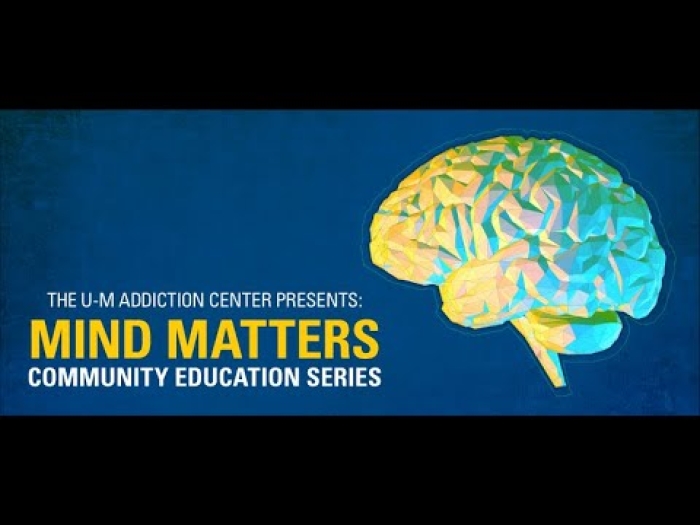Diagnoses of mental health and substance use disorders associated with three times higher odds of overdose.
11:00 AM
Author |

Older teens may have similar risk factors for prescription opioid overdose as adults, a new study suggests.
One in 10,000 adolescents and young adults ages 12-21 overdosed while they had active opioid prescriptions – the same rate that's been reported for adult patients within 30 days of surgery – according to the findings published in JAMA Pediatrics.
And some adolescents and young adults may be particularly vulnerable – a mental health or substance use disorder was associated with a three times higher odds of opioid overdose.
Risk was also higher when patients took high amounts of opioid per day, took long-acting opioids such as OxyContin, and took opioids at the same time as benzodiazepines – central nervous system depressants frequently prescribed for anxiety, stress attacks and sleep disorders.
LISTEN UP: Add the new Michigan Medicine News Break to your Alexa-enabled device, or subscribe to our daily updates on iTunes, Google Play and Stitcher.
The findings are similar to studies of overdose risk factors in older populations.
"Our knowledge of risk factors for prescription opioid overdose comes mostly from studies of middle-aged and elderly patients, particularly U.S. Veterans. There is little data about risk factors for overdose specifically in adolescents and young adults," says lead author Kao-Ping Chua, M.D., Ph.D., a pediatrician and researcher at Michigan Medicine's C.S. Mott Children's Hospital and the Susan B. Meister Child Health Evaluation and Research Center (CHEAR).
"Our findings suggest that clinicians can mitigate overdose risk in adolescents and young adults by using the lowest amount of opioid possible, relying on short-acting opioids, and avoiding the concurrent use of opioids and benzodiazepines."
Prior studies indicate that approximately 1 in 8 adolescents and young adults are prescribed opioids each year, and roughly 30% of the 3,000 opioid overdose deaths in this population during 2016 involved prescription opioids.
"These numbers highlight the importance of mitigating overdose risk when prescribing opioids to adolescents and young adults," says Chua, who is also a researcher at the University of Michigan Institute for Healthcare Policy and Innovation.
These numbers highlight the importance of mitigating overdose risk when prescribing opioids to adolescents and young adults.Kao-Ping Chua, M.D., Ph.D.
Mental health and substance use disorders strong risk factors for overdose
Researchers analyzed national data for 2.8 million privately insured patients ages 12-21 who didn't have cancer and had opioid prescriptions between 2009 and 2017. Half of overdoses occurred among patients with a recent mental health diagnosis, and a quarter of overdoses involved patients with a substance use disorder, according to their analysis.
These risk factors are especially critical, Chua says, as an increasing number of young people are diagnosed with mental health conditions such as depression and anxiety, and as substance use disorders in this population are very common.
"Poor mental health is a growing crisis among youth," says Chua. "It will be increasingly important for clinicians to screen youth for mental health and substance use disorders before prescribing opioids."
MORE FROM MICHIGAN: Sign up for our weekly newsletter
When these disorders are present, Chua says, clinicians should consider additional risk mitigation steps such as co-prescribing naloxone, the opioid overdose antidote.
Safe opioid prescribing practices
The new research also focuses on the importance of avoiding concurrent prescriptions for opioids and benzodiazepines when possible. Previous research finds that young adults ages 18–29 report the highest rates of benzodiazepine misuse in the U.S.
"We know from prior studies that older patients are frequently prescribed opioids and benzodiazepines together," Chua says.
In our study, concurrent opioid and benzodiazepine use was relatively uncommon but was one of the strongest risk factors for overdose. It will be important to identify which clinicians account for concurrent opioid and benzodiazepine use in youth and why this concurrent use is happening."
The study's findings also provide guidance for clinicians who are initiating opioid therapy in adolescents and young adults, and may also be useful for developing national opioid prescribing guidelines for youth, authors note.
"The safest approach may be to initiate opioid therapy using a short-acting opioid and the lowest potentially effective daily dosage," Chua says. "If needed, dosage can be slowly and carefully increased."

Explore a variety of healthcare news & stories by visiting the Health Lab home page for more articles.

Department of Communication at Michigan Medicine
Want top health & research news weekly? Sign up for Health Lab’s newsletters today!





